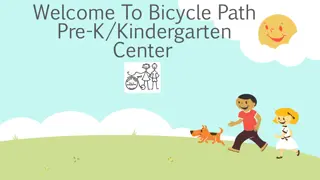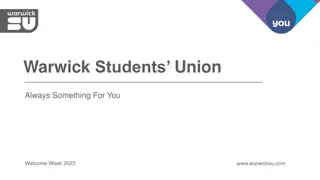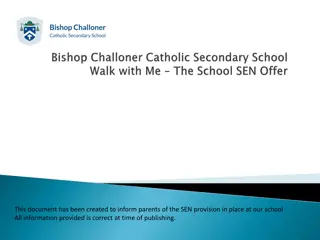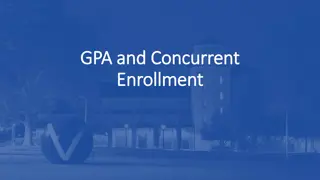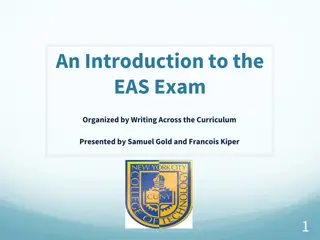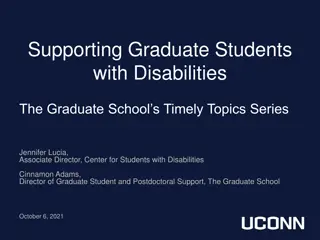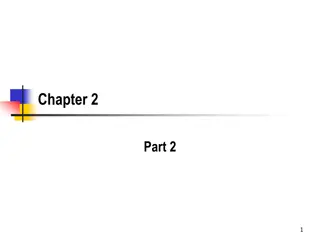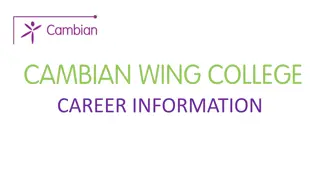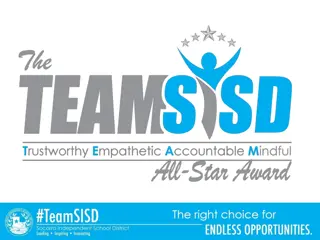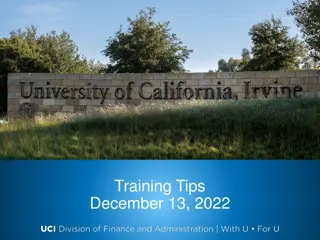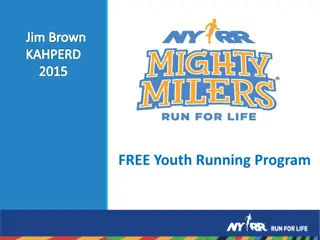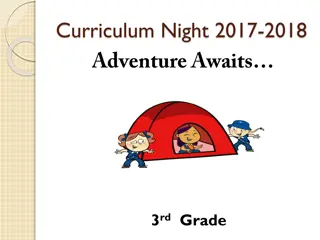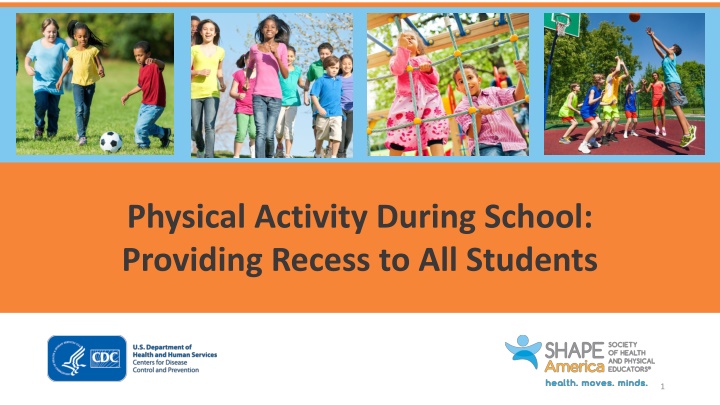
Supporting Student Success through Recess and Physical Activity in Schools
Discover the importance of recess in promoting student success, learn about key resources for recess strategies, and explore the benefits of incorporating physical activity into the school day. Gain insights into the Whole School, Whole Community, Whole Child model, the definition of recess, and national guidance for recess implementation to enhance student well-being and academic performance.
Download Presentation

Please find below an Image/Link to download the presentation.
The content on the website is provided AS IS for your information and personal use only. It may not be sold, licensed, or shared on other websites without obtaining consent from the author. If you encounter any issues during the download, it is possible that the publisher has removed the file from their server.
You are allowed to download the files provided on this website for personal or commercial use, subject to the condition that they are used lawfully. All files are the property of their respective owners.
The content on the website is provided AS IS for your information and personal use only. It may not be sold, licensed, or shared on other websites without obtaining consent from the author.
E N D
Presentation Transcript
Physical Activity During School: Providing Recess to All Students 1
Purpose Explain how recess supports student success. Share three new resources for recess Strategies for Recess in Schools Recess Planning in Schools: A Guide to Putting Strategies for Recess into Practice Recess Planning Template Learn how to support recess in schools. 2
Whole School, Whole Community, Whole Child Model 3
Physical Education and Physical Activity 4
Definition of Recess A regularly scheduled period within the school day for physical activity and play that is monitored by trained staff or volunteers. Recess is a period of time when students are encouraged to be physically active and engaged with their peers in activities of their choice, at all grade levels, kindergarten through 12th grade. 5
Benefits of Recess Improves social and emotional development. Improves memory, attention, and concentration. Helps students stay on-task in the classroom. Reduces disruptive behavior in the classroom. Increases level of physical activity. 6
National Guidance for Recess Provide all students K 12 with at least 20 minutes of recess daily. Prohibit the replacement of physical education with recess. Provide schools and students with adequate spaces, facilities, equipment, and supplies for recess. Ensure that spaces and facilities for recess meet or exceed recommended safety standards. Prohibit the exclusion of students from recess for disciplinary reasons or academic performance in the classroom. Prohibit the use of physical activity during recess as punishment. Provide recess before lunch. Provide staff members who lead or supervise recess with ongoing professional development. Source: CDC and SHAPE America Society of Health and Physical Educators. Strategies for Recess in Schools. Atlanta, GA: Centers for Disease Control and Prevention, US Dept of Health and Human Services; 2017. 7
Recess Participation Percentage of Elementary Schools that Had Students Participate Percentage of Elementary Schools that Had Students Participate in Regularly Scheduled Recess During Regularly Scheduled Recess During the in the School Day School Day* Kindergarten 95% 1st Grade 95% 95% 2nd Grade 3rd Grade 94% 4th Grade 93% 5th Grade 91% 6th Grade 35% *Among elementary schools with students in that grade. Source: CDC. Results from the School Health Policies and Practices Study 2014. Atlanta, GA. US Department of Health and Human Services; 2015. 8
Recess: Number of Days and Minutes* On average, schools schedule students to have recess 5 days a week. On average, schools have students spend 27 minutes in recess each day. Meets the national guidance for recess, but we still have schools not offering recess! YES! *Among elementary schools in which students participate in regularly scheduled recess. Source: CDC. Results from the School Health Policies and Practices Study 2014. Atlanta, GA.: US Department of Health and Human Services; 2015. 9
Recess Policy on Punishment 54% of elementary schools prohibited or actively discouraged staff from excluding students from all or part of recess as punishment for: Bad behavior. Failure to complete class work. 10 Source: CDC. Results from the School Health Policies and Practices Study 2014. Atlanta, GA.: U.S. Department of Health and Human Services; 2015. `
Students Cant Go Outside for Recess 100% of elementary schools hold recess outdoors, weather permitting. But when schools can t let students go outside: 18% have students participate in physical activity in regular classrooms 40% have students engage in other sedentary activities, such as board games 30% have students participate in physical activity in the gym, multi- purpose room, or cafeteria 6% have students watch a DVD or video Note: Percent in bubbles reflect the percentage of elementary schools. Source: CDC. Results from the School Health Policies and Practices Study 2014. Atlanta, GA: US Department of Health and Human Services; 2015. 11
Using Safety Checklist and Posting Rules 97% of elementary schools have playground facilities and equipment. 49% of elementary schools use the safety checklist and equipment guidelines published in the Public Playground Safety Handbook. 49% of elementary schools post rules for the safe use of specific types of playground equipment. 12 Source: CDC. Results from the School Health Policies and Practices Study 2014. Atlanta, GA. Atlanta, GA: U.S. Department of Health and Human Services; 2015.
Physical Activity in Middle and High Schools Physical Activity Practice in Schools* Physical Activity Practice in Schools* Middle Middle Schools Schools High High Schools Schools Have students participate in regular physical activity breaks during the school day 64% 27% Have a specified time or event for schoolwide physical activity 34% 14% *During the school day outside of physical education class. Source: CDC. Results from the School Health Policies and Practices Study 2014. Atlanta, GA: U.S. Department of Health and Human Services; 2015. 13
Strategies for Recess in Schools Category 1: Make Leadership Decisions 1. Identify and document recess policies. 2. Put documented recess policies into practice revise as needed. 3. Develop a written recess plan. 4. Designate spaces for outdoor and indoor recess. 5. Establish weather guidelines to ensure student safety. 6. Train school staff and volunteers for recess. and 16
Strategies for Recess in Schools Category 2: Communicate and Enforce Behavioral and Safety Expectations 7. Establish and communicate behavior management strategies. 8. Teach conflict resolution skills. 9. Ensure that recess spaces and facilities meet recommended safety standards. 17
Strategies for Recess in Schools Category 3: Create an Environment Supportive of Physical Activity During Recess 10. Provide adequate physical activity equipment. 11. Add markings to playground or physical areas. 12. Create physical activity zones. 13. Provide planned activities or activity cards. 14. Provide a combination of recess strategies. activity 18
Strategies for Recess in Schools Category 4: Engage the School Community to Support Recess 15. Establish roles and responsibilities for supervising and facilitating recess. 16. Involve students in planning and leading recess. 17. Mobilize parents and others in the school community to support and sustain recess school. at 19
Strategies for Recess in Schools Category 5: Gather Information on Recess 18. Track physical activity during recess. 19. Collect information on recess to show the effect on student and school outcomes. 20
Using the Planning Guide Use questions to identify what is currently in place. Discuss and select strategies to strengthen recess. Document how schools will implement the strategies. Identify relevant resources. 22
Planning Guide Template Document the customized school recess plan. Identify how school will implement recess. Communicate recess plan with school community. 23
Footsteps on a Playground at Recess 24
Take Action Educate the school community about the benefits of daily recess. Include recess in the local school wellness policy. Know the 19 evidence-based strategies in the Strategies for Recess in Schools. Use the Recess Planning in Schools guideto develop a written school recess plan. 25
Questions 27
Thank You! List speakers and contact information. For more information, contact the Centers for Disease Control and Prevention: Visit www.cdc.gov/healthyschools/ Contact CDC-INFO at www.cdc.gov/cdc-info Call 1-800-CDC-INFO (232-4636); TTY: 1-888-232-6348 28


